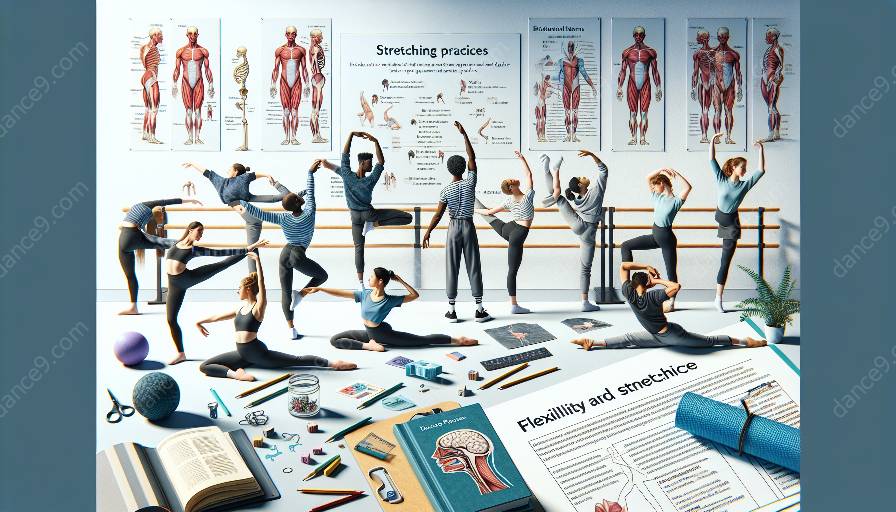Dancers require a high degree of flexibility to execute precise movements, and this flexibility is crucial across various dance styles. However, maintaining flexibility presents specific challenges for dancers, impacting their physical and mental health. This article explores the unique challenges in maintaining flexibility for different dance styles and provides insights into the significance of flexibility and stretching for dancers.
The Impact of Flexibility on Different Dance Styles
Flexibility plays a vital role in each dance style, albeit with specific demands and challenges. In ballet, for instance, dancers need exceptional flexibility to achieve the graceful lines and extensions required. Conversely, contemporary dance may require a different type of flexibility to execute intricate floor work and contemporary movements. Tap dance, with its emphasis on rhythm and footwork, also necessitates flexibility to ensure fluid leg movements.
Ballroom and Latin dance styles often entail dynamic and expressive movements, requiring a balance of strength and flexibility to execute precise footwork and body positioning. Hip-hop, on the other hand, incorporates a wide range of movements that demand both flexibility and strength, further emphasizing the need for holistic maintenance of flexibility across different dance styles.
Specific Challenges in Maintaining Flexibility
1. Balance of Strength and Flexibility: Dancers often face the challenge of maintaining a balance between strength and flexibility. While flexibility allows for the movement range, strength is essential to control and stabilize these movements. Achieving an optimal balance is crucial to prevent injuries and enhance performance across dance styles.
2. Adaptation to Style-Specific Demands: Different dance styles present unique demands on flexibility. Dancers need to adapt their stretching and flexibility routines to cater to these specific requirements, such as focusing on sustaining extensions in ballet or maintaining agility in hip-hop.
3. Consistency in Training: Consistent training is essential for maintaining flexibility, but it proves challenging due to the rigorous nature of dance practice. Finding a balance between rest and training while avoiding overstretching is critical for injury prevention and long-term flexibility maintenance.
Flexibility and Stretching for Dancers
Flexibility and stretching are integral components of a dancer's training regimen, playing a pivotal role in maintaining optimal physical health. Incorporating dynamic stretching techniques, such as leg swings and lunges, enhances flexibility while preventing muscle strain. Furthermore, passive stretches, like static stretches and yoga-based movements, contribute to overall flexibility and muscle relaxation.
Impact on Physical and Mental Health
Maintaining flexibility and engaging in regular stretching not only affects physical health but also influences a dancer's mental well-being. Enhanced flexibility reduces the risk of injuries, promoting longevity in dancers' careers. Additionally, stretching routines contribute to stress relief and relaxation, playing a key role in supporting mental health while enhancing overall performance and confidence.
Conclusion
As dancers strive to excel in their respective styles, the challenges of maintaining flexibility remain ever-present. By understanding the specific demands of different dance styles, incorporating targeted stretching and flexibility exercises, and recognizing the impact on physical and mental health, dancers can tackle these challenges while optimizing their performance and well-being.


































